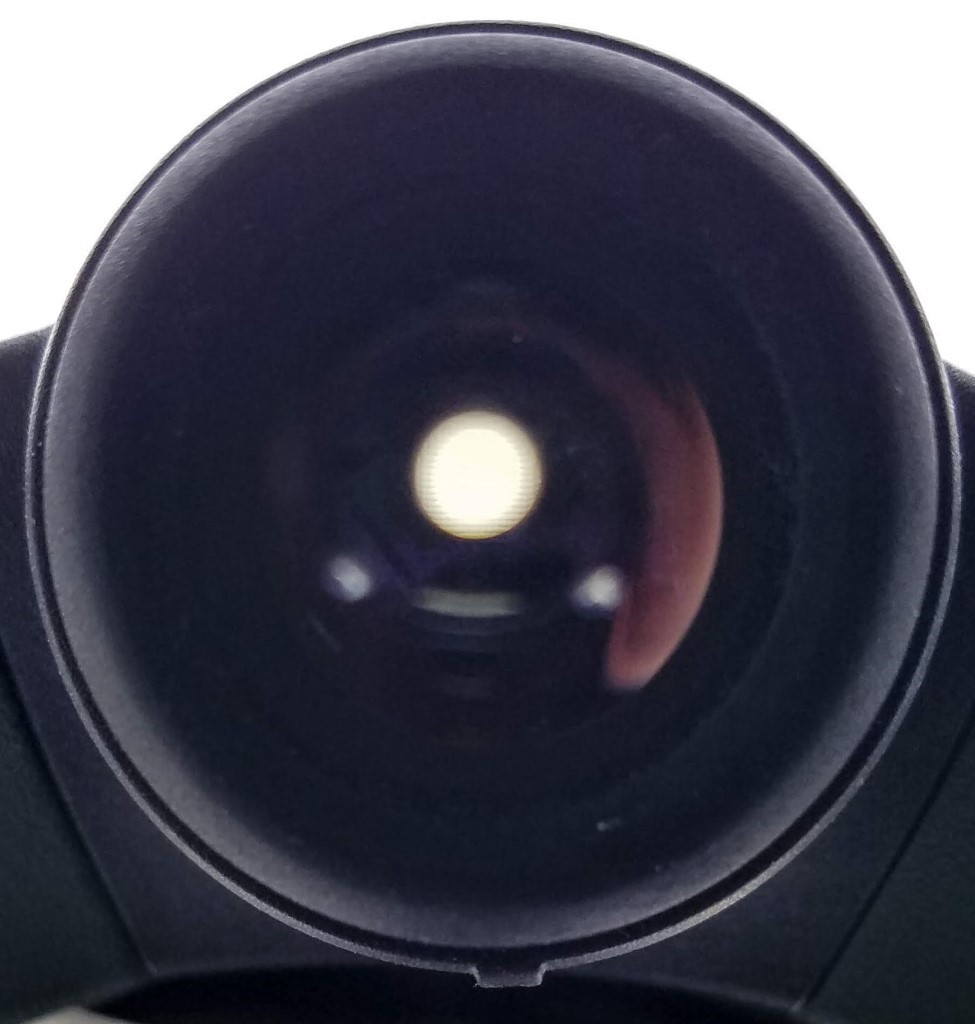Binocular Objective Lenses: Should I get 32 mm or 42 mm (Or More, or Less?)
Many people have answered this question in many ways, with the consensus being, “it depends”. Oh, you were looking for something a bit more useful. Well then, stand by for Cape May Bird Observatory’s version of what it depends upon!
Let’s start with what I think is the primary reason people debate between 32 versus 42 mm: weight.
To my certain knowledge, no one has ever walked into their friendly neighborhood optics store and said, “I need a heavier binocular!” Within any model line, as objective size increases so (all else being equal) will the overall weight. But it pays to do your research; it took me only two minutes to find an 8x42 in Brand A that weighed over half a pound more than Brand B’s 8x42, which was only 1.8 ounces heavier than Brand A’s 8x32. So, we may concede this as a point in favor of smaller objectives, but only narrowly.
Another consideration is field of view (FOV), which isn’t straightforward. Most viewers find that a wider field of view makes it easier to get on a target, and to follow moving birds in flight. Counterintuitively, within any given brand and model series (e.g., Vortex Diamondback HD, Kowa BD II XD, etc.), the 32 mm optics usually have a wider field than the 42 mm version. But Brand A’s 42 mm might have a wider field than Brand B’s 32 mm. Always check the specifications! (Yes, we’ll cover FOV in a future blog.) So, for FOV as a factor, it leans 32 mm but could go either way.
Let’s talk about pupils, both exit and entry. The exit pupil is that bright circle at the eyepiece end, which is the image that is projected onto your eye. Its diameter is one of the few things the consumer can calculate: objective diameter (the second number in a binocular designation) divided by power or magnification (the first number). So, exit pupils range from 2.1 mm for a 10x21 to 7.14 mm in a 7x50*. It’s easy to calculate these; let’s continue with an 8x32 (4 mm exit pupil) and an 8x42 (5.25 mm exit pupil).
Below left, the 5.25 mm Exit pupil of an 8x42; and to the right, a 3.125 mm exit pupil of an 8x25


Exit pupil size matters for two reasons. First, it’s easier to center a large exit pupil on your eyes. You bought the tiny 10x21 because it’s just seven ounces and fits in your shirt pocket. But when you look through it you might struggle to center both wee, 2.1 mm exit pupils on your eyes. Eyeglasses make this even more difficult. In contrast, five to seven-millimeter exit pupils over daylight-contracted pupils usually even cover part of your iris. It’s picture window versus porthole, which makes these faster and easier to use. If you wear glasses or bird with sunglasses (or even both!), especially consider this a point in favor of the 42 mm.
On a sunny day out in the open your iris contracts to under 3 mm, so even an 8x25 brings the eye all the light it needs. But when it’s overcast and you’re beneath a dense canopy searching for your lifer Skulking Brush Lurker, or it’s 22.5 minutes after sunset and you want to see patterns on the Woodcock or Whip-poor-will, your light-thirsty eyes will greedily gulp every photon they can get. Here’s where I recall Pete Dunne’s 32/42 assessment: “It makes a difference the first 15 minutes of the day and the last 15 minutes of the day; the rest of the day, it won’t matter.”
Quality always matters, and lens and prism coatings vary widely. A cheap optic may have only a single coating on each lens, while high quality optics may have six nano-applied coatings and phase-corrected prism coatings. A fully multi-coated single lens surface may exceed 99% light transmission. But a modern binocular has two prisms and up to seven lenses, so only about 88% to 92% of the light entering the objective makes it out to your eye. Even so, with the 42 mm’s 70% greater light gathering ability, there’s no way a 32 mm can equal the 42 in brightness in low-light situations.
But remember, YOU are always part of the equation: if you’re small in stature or have small hands, you may prefer a 32 mm binocular. I love the ergonomics of some 32’s, while others seem too small to me, and being an all-conditions birder, I stick with 42’s. But we probably all know someone for whom a 10x50 or 12x50 is their go-to glass.
Basically, for fair-weather nine to five birders and feeder watchers, or if you realistically won’t spend more than an hour a year in predawn/post dusk type conditions, the extra ounces of a 42 mm may not be doing you any good 99.9% of the time. But if you’re out for all the sunrises you can manage, go for every nightjar, woodcock, and owl, and revel in every bone-chilling winter raptor count and how-can-it-be-this-dark-at-eight-a.m. Christmas Bird Count, then you won’t resent an ounce of those 42 mm bins.
* Seven millimeters is the largest exit pupil size because that’s the size of a fully dilated human pupil. The iris expands or contracts to give a range of pupil diameters of two to seven millimeters depending on light availability. So even a 10x21 may seem bright on a sunny day at the beach. But consider that the maximum pupil size may require almost an hour in near darkness to achieve. Also, as we age, maximum dilation decreases variably depending on factors such as tobacco & alcohol use and genetics. Some septuagenarians (age 70 – 79) may have a maximum pupil size of less than 6 mm and pupils may take longer to react to changes in ambient light (which makes night driving harder).
